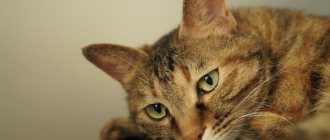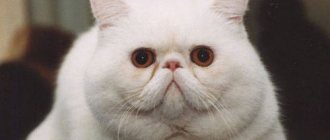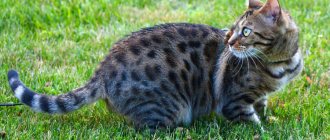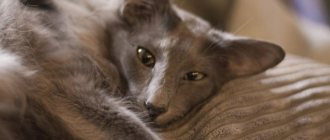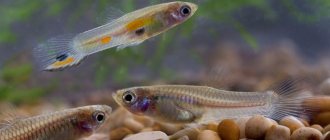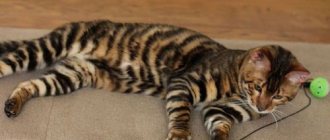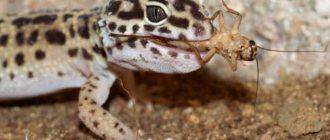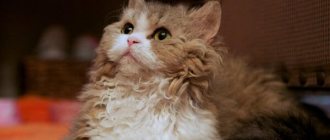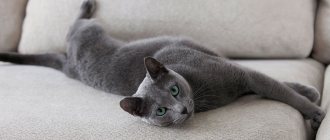“Moon Diamonds,” or Siamese cats, appeared in Europe at the end of the 19th century and since then have confidently held the palm among the most popular breeds. And this is no coincidence: Siamese are notable for their unusual color, expressive physique and interesting character. Therefore, breeders began to breed new breeds that are similar in appearance to the Siamese cat. However, they all have their own, unique features both in appearance and character.
Balinese
This cat breed got its name thanks to the plasticity and grace that cats have, named after the Balinese temple dancers.
This is a miniature, slender cat with unique grace. She is fluffier than the Siamese, she has an elongated body and long legs. The average cat weighs up to 4 kilograms.
Representatives of this breed are less aggressive than Siamese, friendly, sociable and very attached to their owner.
Burmese
Burmese cats were bred by French breeders in 1925. Outwardly, they resemble soft toys: fluffy with big blue eyes.
A distinctive feature of the Burmese are the “gloves” on their paws. She differs from the Siamese in her calm disposition, she can easily find something to do on her own, has a calm character and is moderately energetic. Representatives of this breed are good at feeling the mood of their owner: they can calm a choleric person or lift the mood of a melancholic person.
Thai
Another close relative of the Siamese is the Thai cat. They originated from Thailand. Previously, the Thais guarded temples and lived at the court of the Siamese dynasty.
In their gracefulness they even surpass the Siamese. This breed has a playful disposition and is active until old age. They are very attached to their owners, which reminds them of a dog. These animals are not inherently timid; they are famous for their fearlessness.
Note: The Thai breed is suitable for lovers of temperamental and active animals.
He has a playful character and curiosity.
Beneath their fur they have a strong body with well-developed muscles, and they are slightly larger than their Siamese counterparts.
History of the Siamese and Thai breeds
The ancestors of domestic Siamese and Thais come from Thailand. These graceful animals lived in palaces and Buddhist temples. At that time, they were recognized as divine messengers and given special honors. Thailand in ancient times was called Siam. When in the second half of the 19th century. These animals were brought to Europe, the breed received its name from the country of origin.
Over the years, feline breeders have worked to improve their appearance, so today the appearance of the Siamese cat has specific differences from what it had when it came to Europe from Siam. So it turned out that there were 2 subspecies of 1 breed that differed from each other.
To avoid confusion, in 1990 the animals with their original appearance were renamed Thai. Then they established a standard for this breed, which coincided with the descriptions compiled at the end of the 18th - beginning of the 19th centuries. Among fans of the breed, there is also an unofficial name - “Old Siamese”. These animals are officially recognized as the classic carriers of the original appearance of these graceful tailed animals.
Today this breed is considered closed: to preserve the purity of the species, breeders involved in breeding Thais are prohibited from crossing with other breeds. People who do not understand the intricacies of selection still confuse representatives of 2 different breeds. This is due to the similarity of color and country of origin.
Tonkinese
Tonkinese cats are the result of crossing the Siamese and the Sacred Birman. The breeders intended to get the strong physique of the Burmese cat and the color of the Siamese. But genetics has made its own adjustments to these tailed animals.
They have developed intuition, feel a person’s mood and know how to behave with him.
A distinctive feature is the aquamarine-colored eyes.
Note: it is believed that Tonkinese cats have strong energy fields, thereby being able to protect their owners and the house in which they live from negative influences.
The character and content of mestizos
Although the behavior of cats is not regulated at the genetic level, the character traits that are passed on from each parent always influence the pet’s habits.
In order not to make a mistake in choosing a mixed-breed kitten, you need to focus on the parent breeds, since the temperament of an adult cat necessarily combines their features. And the proportion in which they will develop will depend on the cat’s upbringing and the conditions of its keeping.
Caring for mixed-breed cats is not very difficult. If we are talking about the offspring of two short-haired breeds, then hair care can be limited to weekly combing of the pet.
Metis, like other cats, do not like water. But if you accustom your animal to water procedures from childhood, the cat will feel quite comfortable while bathing. If a mestizo has long and fluffy fur, the owner will have to carefully care for it to prevent the formation of tangles.
Oriental
The Oriental breed was brought to Great Britain at the end of the 19th century. Since this breed was also brought from Thailand, they were initially classified as Siamese. But soon the British Siamese Cat Club set specific standards for this breed, and Orientals were not suitable for it because of its completely green eyes and solid gray color. But since 1925, the color of Orientals can be not only gray, as they began to be actively selected.
Representatives of this breed have active mobility and cheerfulness.
Note: Representatives of the Oriental breed are very attached to their owner and themselves and do not like to be alone.
Orientals have a strong build and thin bones. The tail is very long and thin.
Cat breeds similar to the Siamese in body shape
Of course, when many people hear the phrase “Siamese cat,” they first associate it with its characteristic color. However, the physique of these beauties also deserves attention. After all, they are graceful, elongated and flexible.
Often the breed can be recognized by its appearance, and there are a number of them that are very reminiscent of Siamese cats in this regard.
Oriental
Orientals are notable for their long bodies and huge ears. Sometimes because of them, these cats are even called “goblins,” and their expressive green eyes complement this impression.
Orientals are quite large cats. Their weight can reach 5-8 kilograms. Their fur can be both short and long.
The character of Oriental cats deserves special mention. They are sociable, prefer company to loneliness and extremely love to “talk”.
Important! This breed is not suitable for busy people.
Seychelles
Seychelles cats are descended from Orientals and Siamese. They are quite rare, but nevertheless deserve mention. The fact is that Seychellois are typical cats in the stereotypical sense.
They walk on their own, do not particularly need a family, although they are capable of experiencing tender feelings for a specific person.
They share large ears, an elegant and muscular physique, and blue eyes with their ancestors. The hair of Seychelles cats can be either short or long.
Important! Seychelles do not like change of environment, intrusive attention and do not get along very well with other animals in the house.
Himalayan
This breed was bred as a mixture of Persian and Siamese cats. For further breeding of the breed, only kittens with a pronounced Siamese color were selected. The Himalayan breed is less emotional than the Siamese and is more obedient. They have a strong build and therefore are not very mobile; they prefer calm play with their owner to jumping on curtains.
Note: The Himalayan breed is characterized by a sociable character and devotion to its owner.
Javanese
In the late 1970s, Maureen Davis began breeding Siamese-colored Balinese dogs, but in different colors. This is how the Javanese cat breed came about.
Javanese are very active and require a lot of attention, which they achieve by any means. They are distinguished by a strong attachment to their owners. The graceful, fragile appearance of these cats is surprisingly combined with their strength and strong muscles, which are hidden under a thin, silky coat. In everyday life they are hardy and unpretentious, they become very attached to children who know how to handle this independent creature. They mostly get along well with other pets; much in this situation depends on the character of their neighbor.
Cat breeds similar to Siamese in color
There are about forty breeds similar to the Siamese in color. Therefore, there is nothing strange in the fact that many inexperienced owners confuse Siamese cats with their cousins or second cousins.
Some of them are more similar to their “ancestors”, others less so, but the similarity of colors is still very clear.
Thai
Perhaps it is the purebred Thais who are more similar to Siamese cats than others. But they are larger, and their fur does not fit so tightly to the body. Otherwise, an inexperienced person can easily confuse a Thai cat with a Siamese.
This is interesting! In color and build, modern Thais are closer to those Siamese that lived in Thai temples several centuries ago.
Today these cats have the following properties:
- weight 3.5-7 kilograms;
- coat without undercoat;
- friendly, sociable character.
In terms of color, the Thais almost repeat the Siamese. This also applies to the eyes: they have an expressive, rich blue color and an elongated almond shape.
The character of the Thai people is a gift in itself. They get along well with dogs and other cats. In addition, pets are very sociable and love to “talk” to family members by meowing. In the latter they are also similar to Siamese.
Burmese
Burmese cats, or “sacred Burmese” cats, are also very similar to Siamese cats. However, there are a number of differences between them.
Important! If a Burmese does not have white “socks” on its front legs, then we cannot talk about the purity of the breed.
Burmese cats are distinguished from Siamese by several features:
- weight around 6 kilograms;
- beautiful soft, fluffy coat of medium length;
- active and cheerful, rather gentle disposition.
Many people prefer the sacred Burmese because they are non-conflict and more predictable than the Siamese. In addition, they are not jealous, patient and love to play outdoor games.
The color of Burmese purrs is also noteworthy. Typically, kittens are born completely white and begin to darken only at six months of age. However, some representatives of the breed can acquire a darker shade at three years of age.
Otherwise, with the exception of the white “socks” on the front legs, the color of the Burmese is completely identical to the Siamese.
Balinese
The Balinese is a relatively young breed. They were officially recognized only in 1940. However, since then cats have conquered many human hearts. In many ways, they owe this to one feature, which gave the name to the breed.
The fact is that Balinese come from the American continent and are named after local Balinese dancers who had a pronounced limp. To hide this, the artists tried to make only precise, graceful movements. Balinese cats walk the same way - gracefully and very proudly.
These animals are distinguished by the following characteristics:
- relatively modest weight - about 4 kilograms;
- soft wool of medium length;
- playful and kind disposition.
Balinese are quite thin, have thin bones, but this is compensated by developed muscles. In addition, they are similar to the Siamese in their coat color and expressive blue eyes. Which, however, is not surprising, because breeders believe that Balinese cats descended from Siamese cats. They differ from their ancestors only in their fluffy fur.
Important! Balinese cats are very attached to their owners, so they should not be owned by people who cannot pay enough attention to their pets.
Himalayan
Himalayan cats are close to Siamese due to their characteristic color point color. In terms of physique, they are more reminiscent of Persians. This is evidenced by the flat muzzle, small ears, rounded body shape and soft, long hair.
The character of Himalayan cats is also different from the Siamese. They are non-aggressive and get along well with other pets.
The Himalayans are notable for a number of features:
- weighing 4-6 kilograms;
- long but very obedient hair;
- active, sociable and easy-going disposition.
This is interesting! Until two or three years of age, it is impossible to say exactly what color the fur of a Himalayan cat will acquire.
Tonkinese
Tonkinese are direct descendants of Siamese cats, because they were the result of crossing the former with Burmese cats. A breed arose that inherited all the best from its parents. From the Siamese, the Tonkinese acquired its color, and from the Burmese, a beautiful and strong physique.
Tonkinese cats have the following features:
- weight from 3 to 5.5 kilograms;
- smooth, shiny coat;
- gentle, devoted, obedient, but unobtrusive character.
Tonkinese are sometimes called "Siamese golds." Some breeders consider the designation to be just another name, others say that it is an indication of the subspecies in the breed.
Important! Tonkinese cats have expressive aquamarine eyes.
Ragdoll
Ragdolls are one of the largest cat breeds. They have strong bones, developed muscles, a round head and long hair with developed undercoat.
They are similar in color to the Siamese: many representatives of the breed completely copy the color point and expressive blue eyes, others have some features that are allowed by the standard (white “socks”, a bib or the letter “V” on the muzzle).
Important! Ragdolls quickly won everyone's love thanks to their wonderful character. They are gentle, affectionate, unobtrusive and literally melt when you pick them up. Thanks to this last feature, these cats got their name, because in translation from English “ragdoll” means “rag doll”.
Neva Masquerade
There have been difficult times in the history of the Neva Masquerade breed. The fact is that these cats have a typical color-point color, which is considered a defect in most non-Asian breeds.
However, breeders really liked this coloring on Siberians (it is from them that Neva masquerade dogs originate). So it was decided to separate them with the color-point color into a separate breed. This is what ultimately happened.
From its famous ancestor, the Neva Masquerade received medium size, a strong build and luxurious coat with a pronounced “collar”.
Seychelles
The homeland of these graceful animals is Great Britain. In the 70-80s of the last century, the British set out to breed a new breed of cats. With the blessing of the British Cat Association, breeders began work on crossing Siamese and Persian cats. The result is the appearance of Seychelles cats.
He has an aristocratic appearance, good manners and great demands. They will never allow themselves to be treated with disrespect. Seychelles cats differ from Siamese cats by having large ears of a non-standard shape. Like all representatives of oriental breeds, these cats create the impression of exaggerated elegance. In fact, they are quite strong and muscular.
Note: The Seychelles cat is a domestic breed; it is very difficult for her to tolerate travel and any change of environment.

